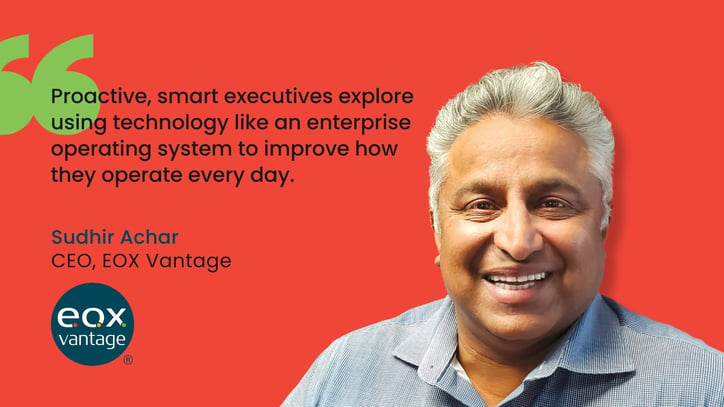How can companies deal with new, changing or restrictive regulations? Regulation, which can be reactionary,
often drives innovation. While sometimes legislation is talked about ad nauseam, other times actions can
happen vigorously, swiftly and completely transform a business model.
Article published in Smart Business Cleveland | February 2020 issue | Author: Jayne Gest
All regulation requires companies to track and maintain relevant information showing compliance, so there is something available for auditors if they come knocking. Automated technology and digitization help companies track and maintain that complex data without adding resources, such as additional employees. It can make sure businesses keep pace with changes to their business condition, especially in a heavily regulated industry like transportation, where there’s a lot of paperwork.

How can companies deal with new, changing or restrictive regulations?
Regulation, which can be reactionary, often drives innovation. While sometimes legislation is talked about ad nauseam, other times actions can happen vigorously, swiftly and completely transform a business model.
All regulation requires companies to track and maintain relevant information showing compliance, so there is something available for auditors if they come knocking. Automated technology and digitization help companies track and maintain that complex data without adding resources, such as additional employees. It can make sure businesses keep pace with changes to their business condition, especially in a heavily regulated industry like transportation, where there’s a lot of paperwork.
Does digital transformation apply to more than just regulatory changes?
Utilizing technology to govern and streamline data doesn’t just apply to regulations that may need to be audited in the future. Proactive, smart executives explore using technology like an enterprise operating system (EOS) to improve how they operate every day.
An EOS platform facilitates the rapid delivery of workflow automation for virtually any paper-based or electronic process in days, as opposed to weeks or months with other platforms. In one example, a logistics provider wanted to automate the process of onboarding more than 4,000 independent contractors. The process had been paper-based and processed manually. It also required duplicate data entry that cost the company valuable time and money.
By adding EOS technology, the logistics provider could have independent contractors walk themselves through the verification process and purchase their own insurance. What used to take four to eight hours became 30 seconds, and the streamlined process helped the business have more capacity to move trucks and build revenue. In addition, the software included safety videos so each time a driver had a claim, they were automatically prompted to complete a safety program to remain compliant.
The need for this kind of digital transformation is something that many businesses face in their typical operations. When you add the burden of regulations to that, it only makes sense to talk to experts about utilizing technology to reduce your operational costs, improve your quality and boost your revenue.


